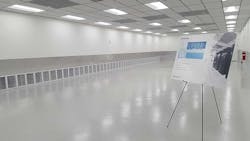Achieving Sustainability through Flexibility in the Data Center
In this week’s Voices of the Industry column, Marc Cram, Director of Sales for Server Technology, discusses how PDUs and advancements in the PDU market have helped address the need for reusability and sustainability in the data center.
Marc Cram, Director of Sales, Server Technology
Over the past ten years, efficiency has been a key driver in developing new data center designs and adopting new generations of hardware. Sustainability as a concept has not often been discussed in the context of the data center. Yet the rapid-fire change in workloads running within a data center often dictates that hardware and networks change along with the software. Implementing a dynamic mix of compute, storage, load balancers, and hardware-based accelerators requires frequent change in the IT infrastructure – racking and re-racking, cabling and re-cabling to reduce latencies, to improve airflow, and to gain efficiencies. During the course of these optimization efforts, the data center generates a veritable stream of e-waste – discarded cables, tie wraps, old hard drives, failed power supplies, obsolete motherboards and power distribution units (PDUs) that don’t have enough of the right outlets in the right place to power the next generation of systems.
To counter the problems associated with obsolescence, most data centers have resorted to various forms of “software defined everything” to allow them to virtually reconfigure for optimum throughput and extend the useful life of the infrastructure. Software defined networking and software defined storage are two examples of this. They enable existing hardware and systems to be re-used without being replaced. But the underlying infrastructure sometimes requires actual changes to the hardware – new servers and new drives to accommodate the dramatically increasing workloads. In that circumstance, achieving a degree of sustainability through re-use can be difficult to achieve. Recent innovations in the PDU market have helped address the need for reusability and sustainability. By combining C13 and C19 outlets into a single UL-certified Cx outlet for factor, the Server Technology HDOT Cx PDU enables rapid re-use and re-configuration of the IT rack.
Where a rack full of 1U servers might initially need a PDU fully populated with C13 outlets, a later densification effort incorporating a blade server chassis needing C19 outlets could see the existing Cx outlets go from accepting standard C14 plugs to C20 plugs without requiring adapter cords, saving the data center time, money, and effort while avoiding the need to replace the PDU. Through outlet level flexibility, the HDOT Cx PDU achieves sustainability and accommodates change without the need for “rip and replace,” thus avoiding another item entering the waste stream.
An HDOT Cx PDU is well-suited for:
- dynamic data centers where frequent hardware change is occurring
- lab environments where gear is brought for proof-of-concept or development
- wherever outlet density and power density are both an issue
- the rack level plan is not known until the last moment
As a brand of Legrand, Server Technology is committed to helping its data center customers be friendly to the environment through power efficiency and sustainability. Learn more about the benefits of the HDOT Cx PDU by visiting https://www.servertech.com/solutions/flexibility-hdotcx/.
Marc Cram is Director of Sales for Server Technology, a brand of Legrand. Contract him at [email protected], or connect with Marc on LinkedIn.





